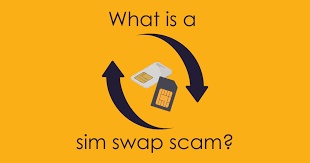Different types of scams and frauds predominate in the world of cryptocurrencies. Hackers use a variety of tools to achieve their goals, from creating fake sites and apps to sending malicious emails to identity theft. These are some attacks that nobody wants to fall victim to, so it is very important to always be aware of any possible threats.
In addition to the aforementioned, the most common attacks in the fintech sector also include SIM Swapping, also known as a SIM card exchange scam. Yes, even your SIM card is vulnerable to hackers. In this post, we will explain some practical steps you need to take to avoid these attacks. To get started, let's first define what SIM card swapping is.
What is SIM card swapping and how does it work?
SIM swapping, also known as SIM swapping, SIM spoofing, SIM cloning, or port-out scams, is a type of malicious attack in which hackers contact your wireless service provider and they impersonate you to gain access to your SIM card. These scammers trick your mobile provider into thinking that you are activating your SIM card in another device, or that your SIM card has been stolen or damaged.
Then the hacker will ask to activate a new SIM card with the same phone number, but on a new phone that is definitely not yours, but owned by the hacker. Once the SIM card is activated, the scammer will start receiving calls, text messages and other personal data registered on your SIM.
Now that the hacker has access and control over your phone number, all accounts connected to your mobile phone number are vulnerable to scams and various fraudulent activities. These accounts can include banks, social networks, and emails, to name a few. Alarming, isn't it? That is why a mobile phone number is considered an unreliable form of identity verification. However, if you are among those people who use SIM cards for account verification, read on and learn more about the steps you can take to protect yourself and avoid being a victim.
Signs that you are the victim of a SIM card swapping attack
Although this scam seems harmless at first, it can actually be very tricky. These are some of the indicators that you should take into account to know if you have become a victim of a malicious attack.
- Activity notification from another device. You will receive a notification from your mobile phone provider, when any activity carried out elsewhere is detected, such as the activation of the SIM card in another device.
- You will not be able to make calls, or send or receive text messages. This is usually one of the first signs that you have become a victim of SIM card swapping fraud. If you can't send or receive text messages or make phone calls, it's probably because hackers have already disabled your SIM and are using your number on their device.
- You will not be able to access the accounts that are linked to the mobile phone number. Once your SIM is compromised, your bank accounts, social media accounts, or emails will be susceptible to hacking. If you can't log in to your account with your credentials, contact your provider immediately.
There are other ways to spot SIM swapping attacks, but these are the most common signs you've probably fallen victim to. Now that you know this, how can you prevent your identity from being compromised?
Helpful tips to protect yourself from SIM swapping scams
Hackers and scammers will do everything they can to get away with it. The good thing is that the chances of these being able to seize your SIM and the confidential information linked to it, can be reduced. If you have the feeling of being a victim, breathe... there is always a way out. With these practical tips it will be more difficult for hackers to fulfill their mission and access your information.
- Use authenticator apps. For accounts that contain highly sensitive and confidential information, such as bank accounts and cryptocurrency wallets, we recommend using apps that allow two-factor (2FA) authentication. With these, your passwords will be stronger and more secure than a normal password. This app generates a verification code that is linked to your smartphone or device, instead of your mobile phone number.
- Set a strong PIN code. For added protection, we recommend that you enable a separate PIN or password for each of your accounts, if your wireless service provider supports this option. With this feature enabled, you will need to enter a PIN each time you log in or change your password.
- Strengthen the security of your account. It uses random, long, and unique character combinations to create strong passwords. If there is a question and answer or make-up question option, use information that only you know.
- Limit the amount of personal information you share online. This is very important as scammers use social media profiles and other websites to collect information, which they can then use to impersonate you.
- Be aware of the fraudulent activities that are prevalent on the Internet. Technology is continually developing, and as it evolves, the tactics and strategies of cyber hackers also advance. For this reason, it is important that you become familiar with typical Internet scams such as phishing, malware, fake apps and websites, etc.
- Be careful about responding to malicious emails, texts, and calls. Hackers and scammers often carry out their plan, sending emails or text messages that need immediate attention and response. If the message asks for your personal information or asks you to click on a suspicious link, it's likely a phishing scam. Hackers can also trick you through calls, so keep an eye out for any unusual requests.


No comments yet